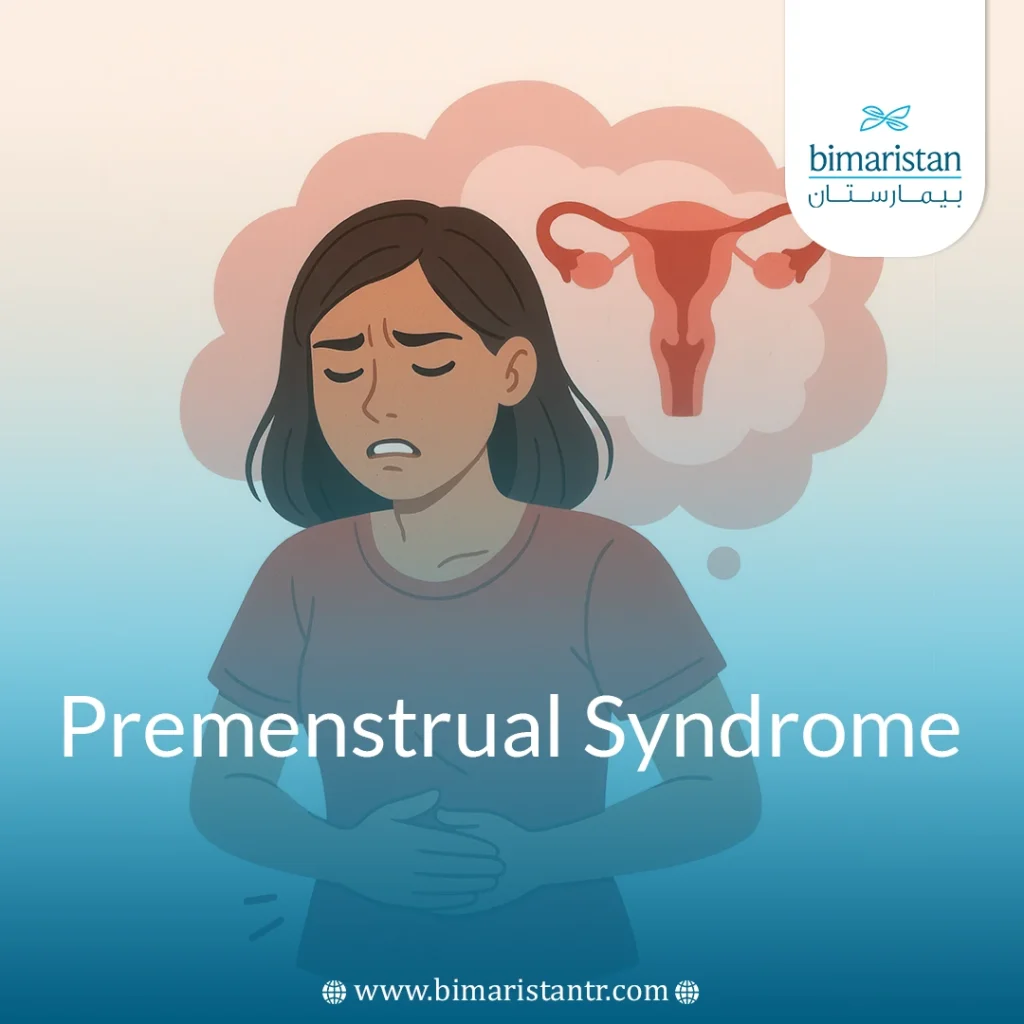Hormonal changes that precede the menstrual cycle are normal for all women, but some women suffer from severe cases of hormonal imbalance before the cycle, known as premenstrual syndrome, which affects the physical and psychological health of women. This condition affects about 75% of women of reproductive age, emphasizing the importance of early diagnosis and appropriate treatment to improve the quality of life.
What is premenstrual syndrome?
Premenstrual syndrome can be described as a set of physical and psychological symptoms that begin one to two weeks before menstruation, including mood swings, breast pain, irritability, in addition to cravings, this is known as premenstrual dysphoric disorder (PMS), while premenstrual dysphoric disorder (PMDD) is a much more severe form of PMDD and is a chronic and severe health condition that requires attention and treatment, and estrogen and progesterone are the most affected hormones in premenstrual syndrome.
Causes of premenstrual syndrome
The exact cause of PMDD is unknown, but there are hormonal, physical, and mental health factors that may influence the disorder.
Hormonal factors
The signs and symptoms of PMS change with hormonal fluctuations, and the most important hormones related to this condition are estrogen and progesterone, and symptoms usually disappear during pregnancy or after menopause, and fluctuating levels of serotonin is an important factor, which is a neurotransmitter in the brain that plays a key role in regulating mood, which may trigger PMS symptoms, and it is believed that low serotonin levels may contribute to feelings of depression before menstruation, in addition to fatigue, food cravings, and sleep disturbances.
Health and psychological factors
Health and psychological factors play an important role in hormonal changes, such as living with a mental health condition like depression, which may increase the likelihood of developing premenstrual syndrome. These factors also include:
- Chronic stress and anxiety.
- Thyroid disorders, such as hyperthyroidism
- Insulin resistance or polycystic ovaries.
- Malnutrition or lack of certain vitamins and minerals
Symptoms of premenstrual syndrome
The symptoms of pre-cycle hormone disorders vary both physically and psychologically:
- Mood swings (anxiety, depression, nervousness)
- Headaches or migraines
- Pain or engorgement in the breasts
- Abdominal bloating or swollen legs and palms due to fluid retention
- Chronic fatigue and exhaustion
- Difficulty concentrating or sleeping
- Back and abdominal pain
- Decreased mental and physical efficiency
- Excessive appetite
- Loss of interest in work

How is premenstrual syndrome diagnosed?
There are no distinctive physical signs or laboratory tests that can diagnose premenstrual syndrome, although there are some tests and examinations that indicate these disorders, such as assessing symptoms in detail with the cycle dates, as the doctor asks the patient to record signs and symptoms in a calendar or diary for at least two consecutive monthly cycles, to observe the symptoms accurately.
Hormonal screening through blood tests
Hormone testing is done to monitor the cyclical pattern of hormone fluctuations, especially when PMDD is suspected, and to rule out other conditions such as hypothyroidism or polycystic ovarian syndrome (PCOS). Sex hormones such as estrogen and progesterone are checked on day 21 of the menstrual cycle, and prolactin, whose elevation can cause cycle disturbances, is also measured.
Rule out other conditions such as hypothyroidism or polycystic ovaries
Hypothyroidism leads to many disorders of sex hormones, as hypothyroidism indirectly causes delayed or non-occurring ovulation in addition to menstrual disorders, and polycystic ovaries (PCOS) also lead to the absence of ovulation and cause elevated androgens that result in irritability, aggression, and mood swings similar to premenstrual syndrome. Additionally, insulin resistance causes sugar and energy fluctuations, so attention must be paid to these medical conditions that are a common cause of menstrual disorders.
It is important to note the importance of following up with a gynecologist or endocrinologist if these disorders are present
How to treat premenstrual syndrome effectively
Drug therapy
The effectiveness of medications in relieving symptoms varies among women, and includes the following:
- Mild antidepressants (SSRIs): SSRIs are selective serotonin reuptake inhibitors (SSRIs) that have shown success in reducing the symptoms of Premenstrual Dysphoric Disorder (PMDD). These medications are usually taken daily, but some women with PMDD may only use antidepressants during the two weeks prior to the start of their period.
- Hormone-regulating contraceptives: These medications stop ovulation, relieving uncomfortable physical symptoms such as breast pain. It may take some experimentation to find the most appropriate type of contraception, with options including pills and patches, or a vaginal ring.
- Nonsteroidal anti-inflammatory drugs (NSAIDS): They can relieve breast pain and menstrual cramps if taken at the onset of symptoms. Options include ibuprofen, naproxen sodium, and paracetamol.
- Nutritional supplements: Vitamin B6, calcium, and magnesium.
Physical therapy and lifestyle changes
It’s important to focus on lifestyle modifications to help relieve pain and combat psychological symptoms related to premenstrual syndrome and hormonal imbalances before your period:
- Eat a balanced diet
- Minimize caffeine and sugars
- Exercise regularly
- Relaxation techniques such as yoga and meditation
- Getting enough sleep
- Avoid smoking and alcohol
Tips to prevent or minimize symptoms
To prevent premenstrual syndrome or alleviate symptoms, the following rules are recommended:
- Write down your symptoms monthly to track your hormonal pattern
- Eat small, frequent meals
- Avoid excessive stress as much as possible
- Consult a doctor if symptoms worsen or quality of life is affected
In conclusion, premenstrual syndrome is a common condition, but it can be controlled and alleviated with proper treatment. The key to treatment and prevention is a proper understanding of the symptoms and early medical follow-up, and attention to mental and nutritional health is an essential part of treatment.
Sources:
- NHS. (n.d.). Pre-menstrual syndrome (PMS). National Health Service. Retrieved June 26, 2025
- MedlinePlus. (n.d.). Premenstrual syndrome. U.S. National Library of Medicine. Retrieved June 26, 2025
